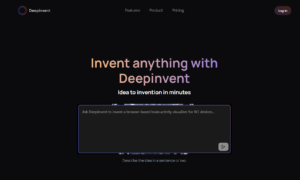Introduction:
Artificial Intelligence (AI) has emerged as a transformative force in various industries, and the field of education is no exception. As classrooms evolve to meet the demands of the digital age, AI in education is proving to be a powerful ally in enhancing learning experiences. This article explores the role of AI in education, delving into the ways smart technologies are revolutionizing traditional teaching methodologies and paving the way for a more personalized and effective learning environment.
The Evolving Classroom Landscape:
In the traditional classroom setting, one-size-fits-all approaches to teaching often fall short in addressing the diverse learning needs of students. AI introduces a paradigm shift by offering personalized and adaptive learning experiences. Short sentences in educational content enhance comprehension, ensuring that students can grasp complex concepts more readily, fostering a deeper understanding of the material.
The Power of Personalization in Learning:
Personalization lies at the heart of AI-driven education. Adaptive learning platforms leverage AI algorithms to tailor educational content based on individual student needs. Short sentences facilitate the delivery of concise information, allowing for a more focused and personalized learning journey. Whether it’s adjusting the difficulty of assignments or providing additional resources, AI ensures that each student receives an education customized to their unique pace and learning style.
Transitions for Seamless Learning Experiences:
Effective transitions are key to maintaining a seamless flow of information in any learning environment. In AI-powered education, transitions play a crucial role in guiding students through different concepts and lessons. They create a logical progression, ensuring that the learning experience feels cohesive and well-structured. Seamless transitions also contribute to the engagement of students, keeping them focused and motivated throughout their educational journey.
Smart Tutoring Systems for Individualized Support:
AI-driven smart tutoring systems offer individualized support, acting as virtual tutors that adapt to each student’s learning needs. These systems utilize short sentences to deliver targeted explanations and feedback, making complex topics more accessible. By analyzing a student’s performance, these smart tutors identify areas of weakness and provide additional exercises or resources to reinforce understanding, fostering a supportive learning environment.
Enhancing Teacher Efficiency with AI:
AI doesn’t replace teachers; instead, it amplifies their capabilities. Educators can leverage AI tools to automate administrative tasks, allowing them to focus more on personalized instruction and student engagement. Transitions between traditional teaching methods and AI-supported activities create a harmonious balance, ensuring that technology complements, rather than overwhelms, the human touch in education.
Short Sentences for Improved Comprehension:
In the realm of education, the clarity of communication is paramount. Short sentences aid in the comprehension of complex concepts, making educational content more accessible to learners. AI-driven educational platforms utilize concise language to explain intricate topics, ensuring that students can easily digest information and apply it to their studies. Improved comprehension fosters a positive learning experience, empowering students to excel in their academic pursuits.
AI in Assessments:
Moving Beyond Traditional Testing:
Traditional assessments often have limitations in gauging a student’s true understanding and capabilities. AI-driven assessments, on the other hand, go beyond standardized testing by providing a more holistic evaluation. Short sentences in test questions contribute to clarity, reducing the chances of misinterpretation. AI analyzes student responses, not just for correctness but also for the underlying thought processes, allowing for a more comprehensive assessment of knowledge and critical thinking skills.
Word Transitions for Cohesive Educational Content:
Cohesiveness in educational content is crucial for effective learning. Word transitions help connect ideas and concepts, ensuring that students can follow the logical progression of information. In AI-powered educational materials, strategic use of transitions contributes to the overall coherence of lessons. Whether moving from one topic to another or introducing a new concept, these transitions create a roadmap for students, enhancing their understanding of the subject matter.
AI for Specialized Learning Needs:
One of the remarkable aspects of AI in education is its ability to address specialized learning needs. Students with different learning styles, abilities, and preferences benefit from AI-driven platforms that cater to individual requirements. Short sentences, combined with appropriate transitions, contribute to the effectiveness of these platforms in delivering tailored content. This inclusivity ensures that every student, regardless of their unique needs, has an equal opportunity to thrive in their educational journey.
The Role of AI in Lifelong Learning:
As the concept of lifelong learning gains prominence, AI becomes an invaluable tool for individuals seeking continuous education. Adaptive learning platforms, powered by AI, offer personalized content that aligns with the evolving needs of adult learners. Short sentences and clear communication are essential in this context, catering to diverse audiences and ensuring that learning remains accessible and engaging throughout one’s life.
Challenges and Ethical Considerations:
While AI in education presents numerous benefits, it is not without challenges. Short sentences and effective transitions are essential in addressing the potential complexities and misunderstandings that may arise. Ethical considerations, such as data privacy and algorithmic bias, demand careful attention to ensure that AI is deployed responsibly and equitably in educational settings. Striking the right balance between technological innovation and ethical considerations is crucial for the continued success of AI in education.
Future Prospects of AI in Education:
The future of AI in education holds exciting prospects. Continued advancements in natural language processing and machine learning will further refine AI’s ability to understand and respond to students’ needs. Short sentences and seamless transitions will continue to play a vital role in optimizing the user experience. As AI evolves, education stands to benefit from increasingly sophisticated technologies that empower both educators and learners in their quest for knowledge.
Conclusion:
The dynamic landscape of education, AI emerges as a key catalyst for positive change. Short sentences and effective transitions contribute to the success of AI in delivering personalized, engaging, and accessible learning experiences. From smart tutoring systems to adaptive assessments, AI is reshaping traditional education paradigms, unlocking the full potential of each student. As technology continues to advance, the fusion of AI and education promises a future where learning is not only smarter but also more inclusive and adaptable to the diverse needs of learners worldwide.



































